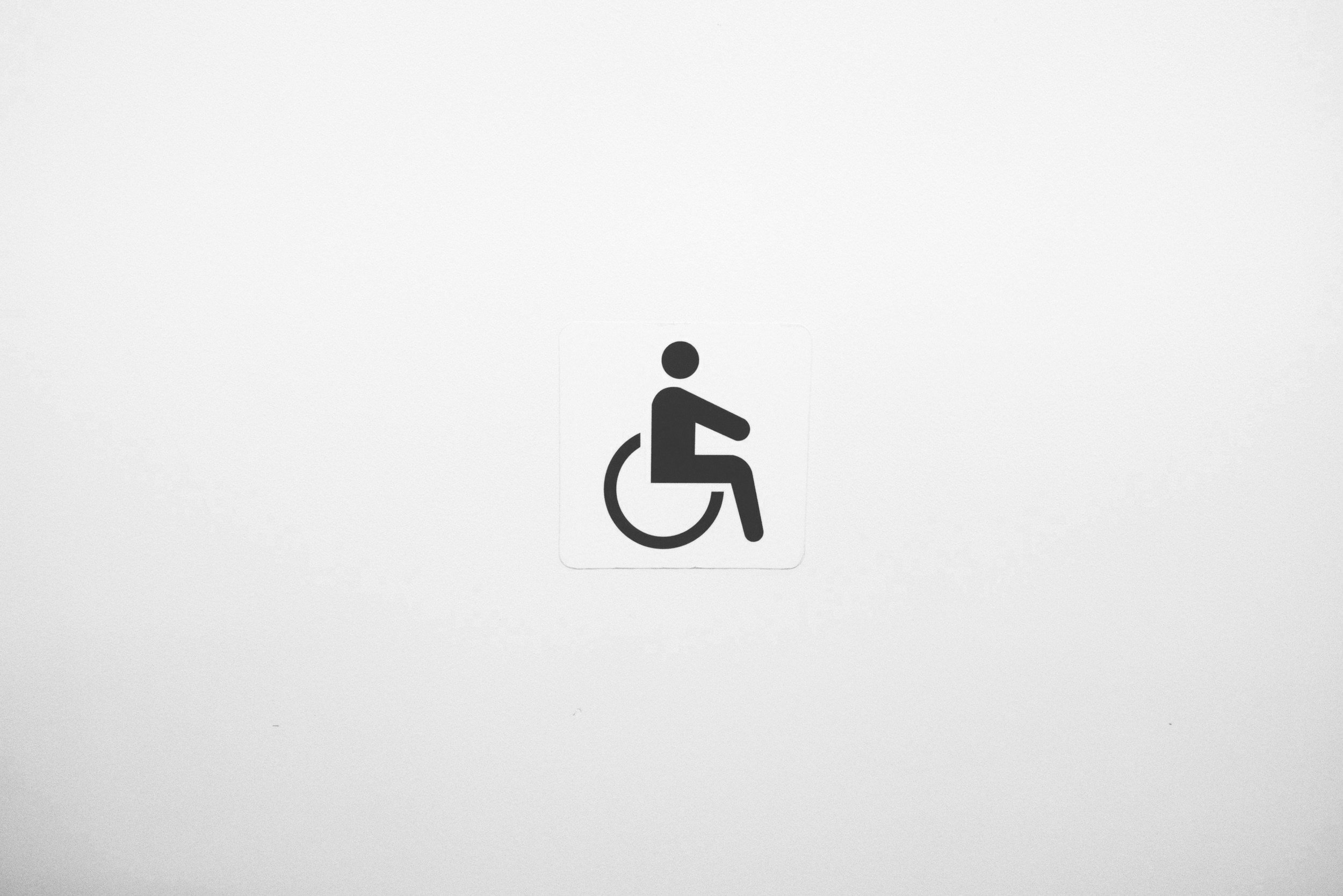
What does Project 2025 say about accessibility and people with disabilities?
Project 2025’s authors have a blind spot about people with disabilities: they don’t mention them, and seem to make them invisible. But don’t be fooled: the conservative plan attacks a wide range of health agencies and social services that, if cut, would have a terrible impact on people with disabilities. The only mention of the Americans with Disabilities Act (ADA) in Project 2025 is in the context of a discussion about pregnant women, as part of its anti-abortion discussion. (pg. 585) But other policies would harm people with disabilities. They include suggested reforms to the Department of Education, elimination of diversity, equity, and inclusion (DEI) programs, caps on funds that cover special education services, reform of the Affordable Care Act, and the broad push to privatize federal programs across the federal government. It would also radically restrict immigration and expel tens of thousands. That could include immigrants with disabilities – and their immigrant caregivers.
As Senator Tammy Duckworth (D-IL) warns, a lack of concern and a history of hateful rhetoric among conservatives also suggest a nightmare for the future. She includes Project 2025’s preferred candidate, Donald Trump in that group. He shocked America with his ugly views on disability by publicly mocking a New York Times investigative journalist, Serge Kovaleski, during a November 2015 campaign rally.(1) Kovaleski has a congenital joint condition called arthrogryposis that impacts his right arm and head movement. In a widely reported incident, Trump flapped his arms at odd angles in an exaggerated imitation of Kovaleski’s movements – an action Trump later sought to deny.(2) Trump “mocked a reporter with a physical disability, dismissed traumatic brain injuries as ‘not very serious,’ [and] attempted to slash support for disabled veterans,” said Duckworth, citing reasons for her warning.(3)
Here are specific ways Project 2025’s agenda would strip people with disabilities of support and services – and hurt their families, too:
It calls for total elimination of the U.S. Department of Education and would gut funding for programs that support students with disabilities.(4) Lindsey Burkey, who heads the Heritage Foundation’s Center for Education Policy, is the arch-conservative author of the Project 2025 chapter on education. She proposes giving federal dollars to the states as block grants with no rules or regulations attached. Instead, states could opt out of any federal education program, but still collect federal funds as a grant to use as they see fit.(5)
It wants to turn the Individual with Disabilities Education Act (IDEA) funds, like Title I funding, into a no-strings block grant to states. IDEA is supposed to cover 40% of states’ special education costs. In 2022, the historically underfunded IDEA accounted for roughly $13 billion, while Title I funds were over $16 billion.(6)
It would eliminate Head Start, which has helped over 3 million children with disabilities since its beginning in 1972.
It would reduce access to health insurance through the Affordable Care Act (Obamacare) while pushing the option of private insurance. The ACA covers 45 million Americans – up 46% from in 2021 -- and is essential to people with disabilities, pre-existing conditions, serious health issues including cancer and diabetes, and kids with asthma.
It calls for a time-limit or lifetime caps to be added to Medicaid, which now covers 88 million Americans. Last year, health analysts warned that 18 million Americans risked losing their Medicaid insurance as state-by-state coverage is reduced.(7)(8) Medicaid cuts could spell exorbitant out-of-pocket costs for people with disabilities.
Reducing support for Medicaid and Social Security Disability Insurance (SSDI) would increase hurdles for people needing assistive devices, as well as home- and community-based services such as personal-attendant care, skilled nursing, and specialized therapies that support independent living in one’s home.
It would also threaten the continued employment of family members who provide in-home care services to someone living with a disability or serious health condition. Disability activists warn that such cuts mean people with disabilities could get pushed out of the workforce and into institutions and moved away from caring family providers.
“Overall, the plans in Project 2025 could make life much harder for disabled people by reducing essential services, increasing barriers, and lowering their quality of life.”(9)
Project 2025 would raise prescription drug prices by repealing the Biden-Harris administration’s caps on out-of-pocket drug costs.
Project 2025’s draconian immigration plan would arrest, detain, and expel tens of thousands of undocumented immigrants, as well as unaccompanied children; it goes after a legal chain of migration to cut spousal asylum and automatic birthplace citizenship, too (see our immigration paper for more). This would impact immigrants with disabilities and caregivers who provide in-home care services to people with disabilities.
According to the Migration Data portal, “Persons with disabilities are often among the most vulnerable and disproportionately affected groups in migration and forced displacement situations.” Global data showed that an estimated 12 million people in the forced displacement population were people with disabilities in 2020, but the actual prevalence was likely higher.(9)(10)
Project 2025 is silent on raising the minimum wage and takes an anti-union position. This is contrasted with statistics that reveal the unemployment rate for disabled workers remains twice as high as those without a disability, and they are far less likely to be employed. The unemployment gap grows even more when seniors with disabilities are factored into the labor analysis, according to the Center for American Progress.(12)
Disability activists also worry that Project 2025’s anti-regulatory policies will impact mobile accessibility, including use of AI algorithms and hiring technology that discriminate against disabled applicants, further reducing access to jobs.(13)
Similarly, disabled people could be left with fewer options if public buildings and transportation don’t follow ADA accessibility rules or if the rules are changed.
The past conservative track record suggests what the future could look like, given that Trump is again the GOP’s presidential candidate, while 81% of Project 2025’s authors, contributors, and editors are ex-Trump administration or transition officials:
The 2024 Republican National Convention (RNC) denied observer passes to representatives of the American Association of People with Disabilities. Russell Vought, ex-Trump budget chief, and author of Project 2025’s chapter on reshaping the Executive branch who proposes giving the next GOP president unprecedented powers, served as 2024 policy director of the RNC’s platform committee. (see brief, “Who’s Who Among Trump Officials in Project 2025?”)
The Trump administration tried to slash unemployment benefits for disabled veterans.
The Trump administration scaled back the use of fines against nursing homes that harm residents or place them at grave risk of injury.
LOSING A VOICE: Under Project 2025, could people with disabilities lose access to vote?
The question merits asking, based on lawsuits that address access hurdles to voting. The Justice Department’s website, which lists all current ADA lawsuits, includes 15 recent lawsuits addressing a lack of accessibility at voting sites. That’s an indirect way of purging voter rolls: if people with disabilities can’t get to the ballot box to vote, their voices won’t be heard.(14)
OSHA's policy states that if an employee can perform their job functions in a manner which does not pose a safety hazard to themselves or others, the fact they have a disability is irrelevant. It pushes employers to strive for working conditions that safeguard the safety and health of all workers, including those with special needs and limitations. The Americans with Disabilities Act (ADA) imposes specific obligations on employers relative to employment of individuals with disabilities. The ADA requires employers to make reasonable accommodations in regards to which jobs "qualified individuals with a disability" may perform. Employers are required to make individualized judgements, based on reliable or other objective evidence, when determining if an individual with a disability can perform the functions of a given job.
(1) “Donald Trump mocks reporter with disability – video,” The Guardian, November 26, 2015.
(2) Donald Trump under fire for mocking disabled reporter, The BBC, November 26, 2015.
(3) https://democrats.org/news/senator-tammy-duckworth-americans-with-disabilities-cant-afford-a-second-trump-term/
(4) Ibid.
(5) Greene, Peter. “What Does Project 2025 Actually Plan For Education?” Forbes, July 15, 2024.
(6) Ibid.
(7) “5 Ways President Trump’s Agenda Is a Disaster for People with Disabilities,” web report, Center for Progressive Reform, March 8, 2017.
(8) Burns, Alice; Williams, Elizabeth; Corally, Bradley; Rudowitz, Robin. “How Many People Might Lose Medicaid When States Unwind Continuous Enrollment?” Kaiser Family Foundation web report, April 26, 2023.
(9) https://defeatproject2025.org/issues/disability/#:~:text=Summary%20of%20Impacts,medical%20care%20and%20financial%20s
(10) “Disability and human mobility,” Migration Data Portal, web report, updated July 11, 2023.
(11) “Project 2025 and the Threat to Disabled People,” web report by the Law Office of Lainey Feingold, July 7, 2024. (lflegal.com)
(12) “Disabled Workers Saw Record Employment Gains in 2023, But Gaps Remain,” Center for American Progress report, February 22, 2024.
(13) “Two US Government Agencies Warn about Hiring Technology that Discriminates against Disabled Applicants,” web report by the Law Office of Lainey Feingold, July 22, 2022.
(14) https://www.justice.gov/crt/disability-rightscasessearch_api_fulltext=voting&sort_by=field_date&page=1
(15) Employment of individuals with disabilities. Occupational Safety and Health Administration. (osha.gov)
